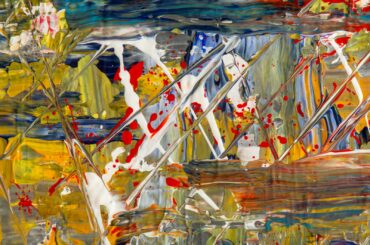Has somebody ever challenged your aspirations by asking, “What are you going to do with an art degree?” Playing video games is not a profession, either! Or perhaps making cartoons is merely a kid’s pastime. Otis College of Art & Design, however, provides some solutions for them as well as perhaps for you. After 25 years, the provost Jiseon Lee Isbara declared that the digital media department was evolving and establishing distinct, freshly established undergraduate degrees in game & entertainment design and animation. They named the chairmen of the new departments in August; they are respectively industry veterans Joffery Black and Ron Bernard.
Otis College President Charles Hirschhorn is confident that the institution is becoming equally dedicated to the digital realms as it is to its core departments in art and design, including such indelible analog, tactile arts as pottery. In a project that also included the Fashion Design and Digital Media programs, Otis collaborated with Activision, the game development studio behind Call of Duty, Tony Hawk, and Skylanders, in an especially interesting illustration of how expansive and interconnected this group of new media fields is becoming. Cold War, Modern Warfare, and Infinite Warfare were three Call of Duty video games that inspired fashion design students to create a digital fashion collection and accompanying visual surroundings for a high-fashion digital runway collection.
“It’s not just digital media, or video game design, or animation — it’s also digital fashion, environmental, product, and toy design,” Hirschhorn asserts, fully aware that the Otis mission to prepare its students for practical, career-oriented jobs in the creative economy must, by definition, include the Metaverse — and equally aware that gaming is a multibillion-dollar global industry, and that animation not only goes far beyond children’s entertainment at this point but also transcends traditional boundaries of children.
According to Ron Bernard, chair of an animation, “animation is a discipline that is always growing with new techniques and software, therefore our program has to train students to be imaginative, adaptable, and adaptive with changing tides.” He promotes careers in character and technical animation, motion capture, visual effects, games, and advertising — in industries ranging from entertainment to education, medicine, the military, and social media. “I’d like to explore some of the newer, paradigm-shifting fields of virtual production, social media, and augmented reality,” he says.
According to Bernard, I’ve always loved animation. (L.A. Weekly) “I have extremely happy recollections of viewing all the making-of and behind-the-scenes films of early Disney animation, Fleischer Studios, Will Vinton’s Claymation, and many more during my childhood. Who Framed Roger Rabbit? and Anchors Aweigh, both released in 1988, particularly captured my attention for their seamless live-action and animation blending. Later, Larry Lauria, a former Disney animator, taught Bernard classic 2D animation, and he was inspired by him to learn more about VFX. Bernard remembers that he had a background in computer programming, physics, and engineering, so this was a perfect fit for me. As he has devoted his career to animation, visual effects and motion graphics, the intersection of science and animation has become a fascinating topic for him.
When Bernard had the opportunity to collaborate closely with Phil Nibbelink, who served as the Who Framed Roger Rabbit? Film’s supervising animator, in his Beijing animation company; everything for him came full circle. Bernard observes that “life has a funny way of boomeranging.” he only hopes that he may ignite kids’ attention in the same way that Phil’s work did for him.
The chair of game and entertainment design, Joffery Black, spent a significant amount of time working on games based on Spongebob Square Pants and The Incredibles at Heavy Iron Studios. At the Los Angeles Film School, Black helped create and oversee the Animation and VFX programs. In games, films, and animation, as well as in AR and VR, he has expertise as a modeler, texture artist, lighter, and illustrator. His distinct take on the “What will you do with an art degree?” discussion results from all of this. Jobs in gaming studios are the apparent career path, but it doesn’t end there, according to Black.
Black describes growing up during a time when superhero movies, including 2002’s Spider-Man starring Tobey Maguire, had the most lifelike-looking effects available at the time and video games’ visuals began to improve with the PlayStation 2 console. His very first game was SpongeBob SquarePants: Battle for Bikini Bottoms. “This is just going to grow better, and I can’t wait to be a part of this,” says Black of his feelings following the encounter. It’s still thrilling and new after 20 years, just like when he first started!
Black also concurs with Bernard and Hirschhorn that these new majors’ skill sets do indeed spread across several other industry areas. Students will have the opportunity to study procedures and methods that have entered the game business through the new BFA degree in game design, according to Black. The benefit of these abilities is that they may be used for occupations in the newest fields of real-time development, including AI and other hybrid experiences and interfaces, mobile and console games, virtual reality and augmented reality, virtual production, Web 3.0, and Metaverse.
According to Black, it’s encouraging that Otis, a venerable name in art and design, has adopted a vision for game and entertainment design. “The future program will launch an interesting education that is now taking place, not just in the business but especially in the industry here in Los Angeles”. He also added that “he is extremely pleased to have Otis be a part of the curriculum and foundation for our kids science games, virtual production, VR/AR [virtual reality/augmented reality], XR [extended reality], and continuing developing tech will have enormous growth over the coming several years!”



